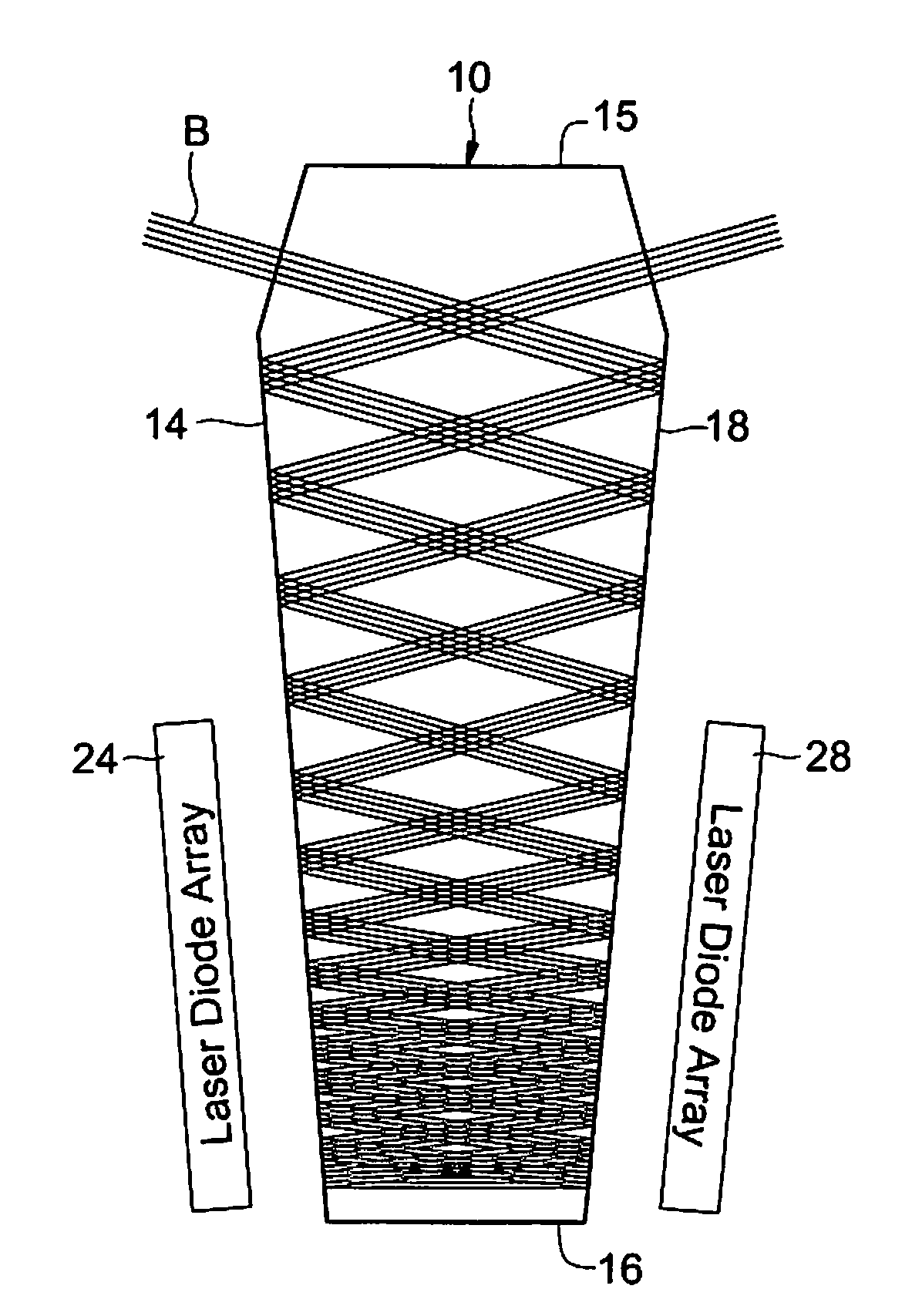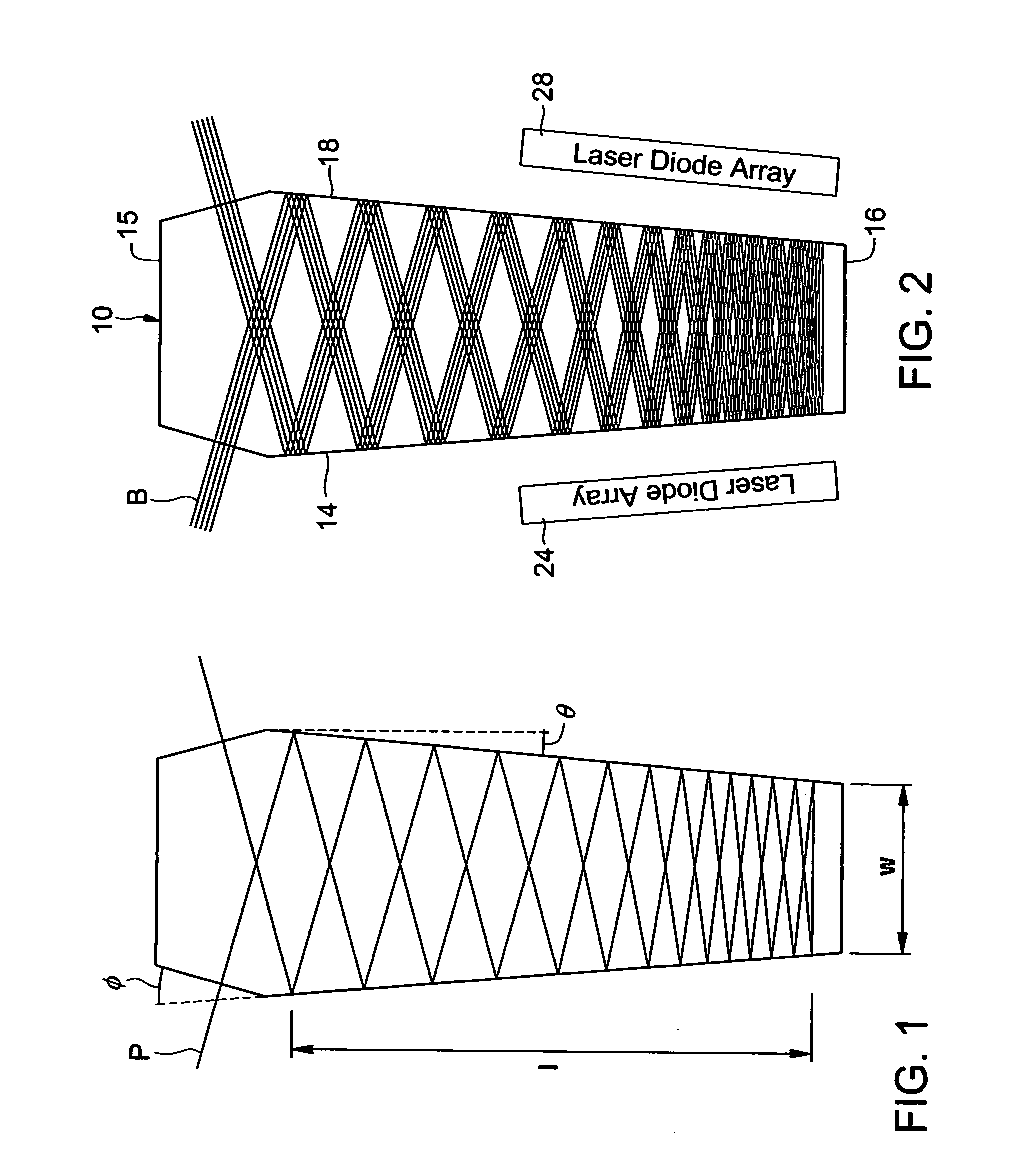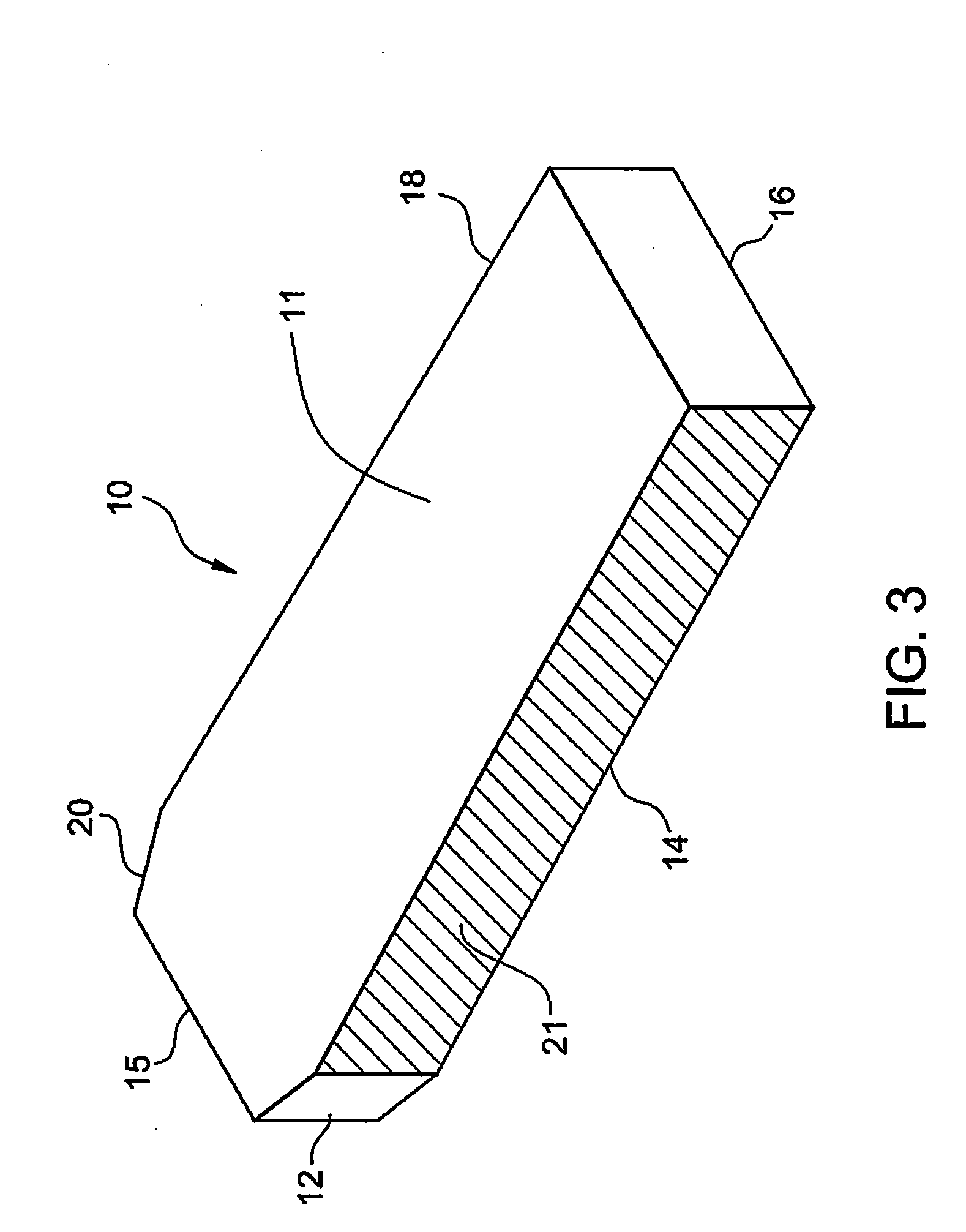Solid-state laser gain module
a laser gain module and solid-state technology, applied in the direction of laser details, optical resonator shape and construction, electrical equipment, etc., can solve the problems of high cost of space-based laser systems, large complex laser systems employed, and many systems employing nd:yag as laser gain materials achieve optical efficiencies of only 1-2%
- Summary
- Abstract
- Description
- Claims
- Application Information
AI Technical Summary
Benefits of technology
Problems solved by technology
Method used
Image
Examples
Embodiment Construction
[0015]In the following detailed description, reference is made to the accompanying drawings that form a part hereof, and in which are shown, by way of illustration, specific embodiments, which may be practiced. These embodiments are described in sufficient detail to enable those skilled in the art to practice the embodiments. Those skilled in the art will readily understand that other embodiments may be utilized, and that logical, mechanical, electrical and other changes may be made, without departing from the scope of the embodiments. Ranges of parameter values described herein are understood to include all sub-ranges falling therewithin. The following detailed description may, therefore, not to be taken in a limiting sense but as illustrative of the embodiments of the present invention.
[0016]FIG. 1 shows a laser gain module 10 that includes a spoiled hexagonal or coffin shape. The laser gain module 10 may be of a crystal such as neodymium yttrium aluminum garnet (Nd:YAG) which emi...
PUM
 Login to View More
Login to View More Abstract
Description
Claims
Application Information
 Login to View More
Login to View More - R&D
- Intellectual Property
- Life Sciences
- Materials
- Tech Scout
- Unparalleled Data Quality
- Higher Quality Content
- 60% Fewer Hallucinations
Browse by: Latest US Patents, China's latest patents, Technical Efficacy Thesaurus, Application Domain, Technology Topic, Popular Technical Reports.
© 2025 PatSnap. All rights reserved.Legal|Privacy policy|Modern Slavery Act Transparency Statement|Sitemap|About US| Contact US: help@patsnap.com



